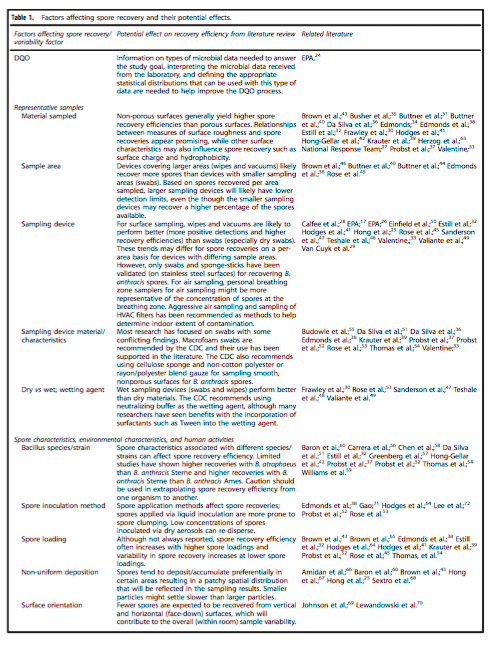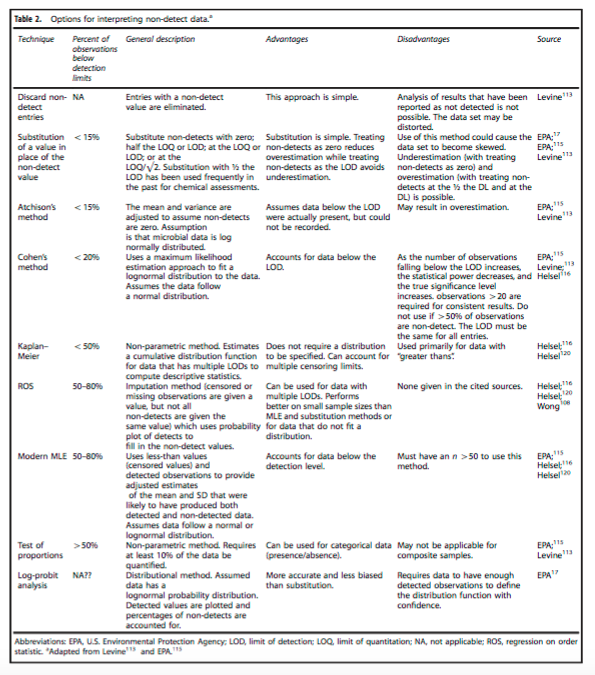Got notified of this paper by some automated Google Scholar searchers I have set up (this one for papers on microbial forensics) and I thought it would be of interest to some.:
By Erin E Silvestri, Cynthia Yund, Sarah Taft, Charlena Yoder Bowling, Daniel Chappie, Kevin Garrahan, Eletha Brady-Roberts, Harry Stone and Tonya L Nichols from the EPA and Battelle. The paper focuses on anthrax (e.g., in the decontamination of a building exposed to anthrax) but also discusses how some of the issues they found may be of relevance to other taxa. In addition they discuss how the sampling method and the sampling site properties (e.g., the building) can affect results, so there is a little bit of building science in here. The paper is Open Access (yay) in the Journal of Exposure Science and Environmental Epidemiology.
Here is the abstract:
In the event of an indoor release of an environmentally persistent microbial pathogen such as Bacillus anthracis, the potential for human exposure will be considered when remedial decisions are made. Microbial site characterization and clearance sampling data collected in the field might be used to estimate exposure. However, there are many challenges associated with estimating environmental concentrations of B. anthracis or other spore-forming organisms after such an event before being able to estimate exposure. These challenges include: (1) collecting environmental field samples that are adequate for the intended purpose, (2) conducting laboratory analyses and selecting the reporting format needed for the laboratory data, and (3) analyzing and interpreting the data using appropriate statistical techniques. This paper summarizes some key challenges faced in collecting, analyzing, and interpreting microbial field data from a contaminated site. Although the paper was written with considerations for B. anthracis contamination, it may also be applicable to other bacterial agents. It explores the implications and limitations of using field data for determining environmental concentrations both before and after decontamination. Several findings were of interest. First, to date, the only validated surface/sampling device combinations are swabs and sponge-sticks on stainless steel surfaces, thus limiting availability of quantitative analytical results which could be used for statistical analysis. Second, agreement needs to be reached with the analytical laboratory on the definition of the countable range and on reporting of data below the limit of quantitation. Finally, the distribution of the microbial field data and statistical methods needed for a particular data set could vary depending on these data that were collected, and guidance is needed on appropriate statistical software for handling microbial data. Further, research is needed to develop better methods to estimate human exposure from pathogens using environmental data collected from a field setting.
They have a flowchart outlining the challenges in interpreting field data that they discuss in the paper:

And also a VERY comprehensive Table on factors affecting field recovery of spores and their potential affects.
And they also have a detailed table on how to interpret “non detect” data (i.e., cases where an organism of interest like B. anthracis was not detected.

